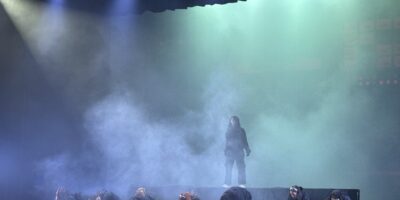Hi there beer lovers! Now that Neil and Dan have graduated we have taken on the beer column and we can’t wait to call our beer drinking “research.” Before we get to the beer we want to introduce ourselves.
Rebecca: Hi, my name is Rebecca Cameron and I’m in 4N Geological Engineering. I work a lot in the EngSoc Office and the CnD, and if I’m not there I’m probably in POETS (sipping on a delicious POETS Warrior Lager if it’s Thursday or Friday). I love stouts (O’hara’s, Guinness, Cobblestone, and St. Ambroise Oatmeal Stout) and dunkels (Erdinger Dunkel and Weinstephen Dunkel are awesome).
Eric: Hi everyone, I’m Eric Cousineau and I’m in 4A Electrical Engineering. I’m A-Soc VP-Education, and I spend a lot of time in meetings and in the EngSoc Office. I really like ales (Dead Elephant, Corne du Diable, and most other REAL IPAs – not Keith’s) and anything Trappist style.
Our favourite breweries (right now) are Flying Monkeys and Dieu du Ciel. As a couple we have tried hundreds of different beers together and we have almost 60 unique beer glasses sitting on our shelves waiting to be filled with hoppy goodness!
Our beer column will be looking into how to taste beer, pour beer, find good beer, different beer styles, and the history of beer. We hope that we can convince people to be more adventurous in their beer drinking decisions. There’s some amazing imports and microbrewed beer available, so don’t let the Beer Store’s Top Ten make your beer choice for you!
For this first article, we’ve decided to share the wonder of Black and Tan, a blended beer drink. It is made from a blend of a pale ale (such as Harp or Bass Pale Ale) with a dark beer such as a stout or porter (generally Guinness Draught is used). This style of beer originated in Britain pubs and was first described in the Oxford English Dictionary in 1889. Many breweries are offering pre-mixed Black and Tan, however these really don’t capture anything remotely like the taste of a freshly poured Black and Tan. When poured correctly the drink will have the pale ale on the bottom half of the glass with the dark beer on the top half of the glass. There will be a very distinct line separating the two beers – this spot is the best tasting bit of the whole drink. It’s easy to tell a good beer bartender with this drink as amateur bartenders (or those who are rushing) tend to blend the two beers while pouring which will result in no distinct line between the two beers.
To pour a Black and Tan fill a shaker pint glass or a English tulip pint glass halfway with the ale (the picture and video of the black and tan we poured uses the shaker pint glass and Harp). Pour the ale so it has a lot of head (at least two inches). This will make it much easier to create a distinct line between the two beers. Then pour the Guinness slowly over an upside-down tablespoon placed over the glass. Avoid splashing and mixing the layers as this will decrease the quality of your drink. See our video of us pouring a Black and Tan at http://youtu.be/boQJCEDgWb8 (you can also check it out on ercousin’s channel). This drink takes a bit of practice to pour, but trust us, it is worth it! If you are out on the town and would like to order a Black and Tan, your best bet for a well-made drink is at an Irish pub, particularly at Molly Bloom’s here in town. If you ask for one and get a blank stare cancel your order and get something else. It is a fun sport to watch a bartender sweat as he attempts to pour one of these.
The aroma of a freshly poured Black and Tan is of dark coffee and roasted malt like that of a standard Guinness pint. When most of the Guinness is consumed (carefully without mixing the drink), the clean barley aroma of the Harp Lager begins to dominate. At first sip, the taste is similar to the aroma, but with some cocoa and bitterness. As the beer is consumed the Harp and Guinness flavours begin to mix and a delicious balance is reached. After the Guinness is gone you are left with the crisp, light, malty taste of Harp.
As with any drink there are a ton of variations that can be made on the basic recipe. One of our favourite variations of a Black and Tan is a Black and Velvet. This recipe substitutes the pale ale with cider (usually Strongbow Cider). Another variation is the Black and Trash, which uses American Budweiser Lager…however, we don’t suggest this drink.
Overall this drink (and some of its variants) is a refreshing change of pace from the standard English Ales at Irish Pubs, and makes for a fun conversation item in a bar. Learning to pour this drink is more than an art, but is quite fun. We highly recommend you give this drink a shot, and get out of your comfort zone to explore the wonderful world of beer. As we always say, Fear No Beer!




Leave a Reply